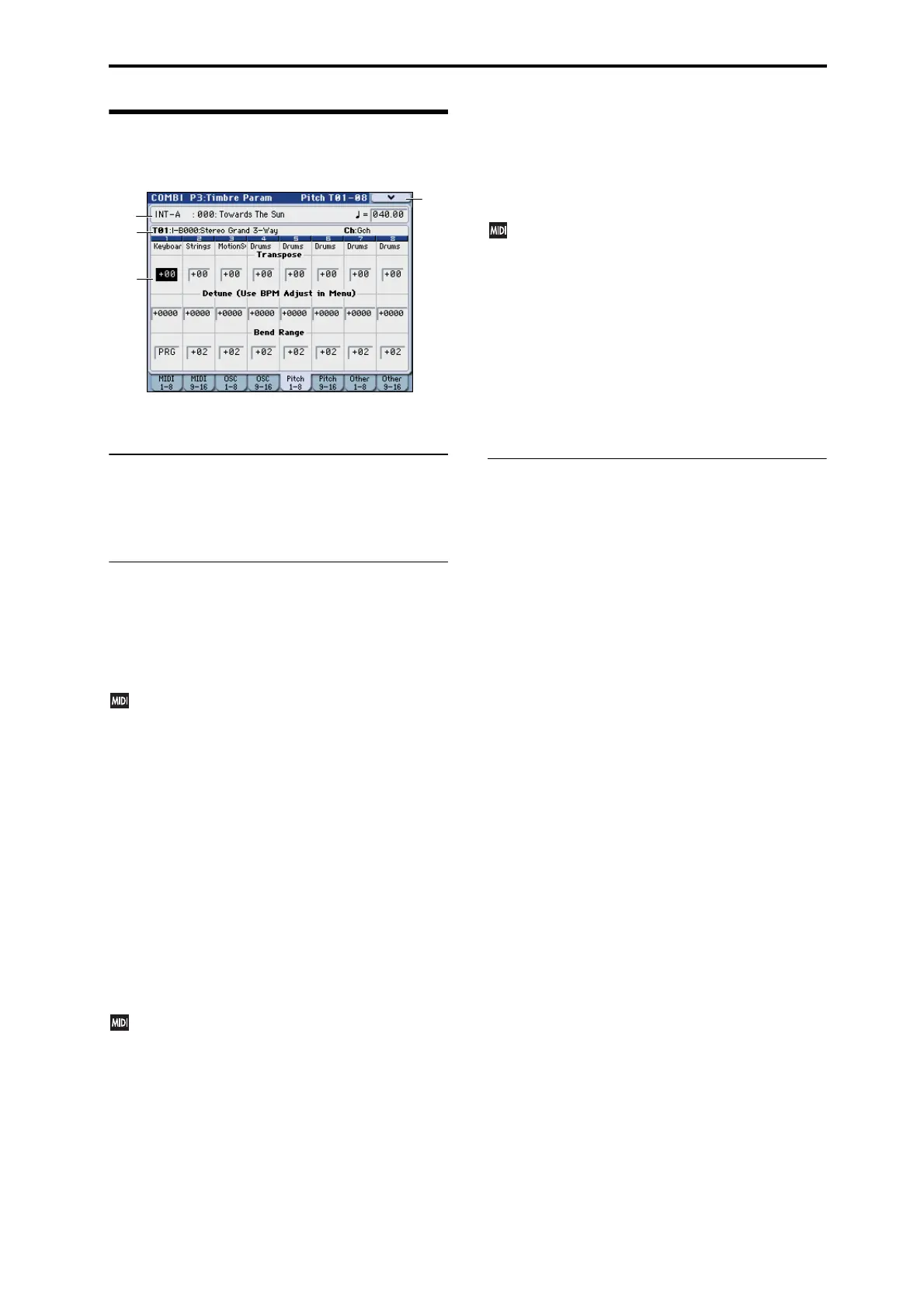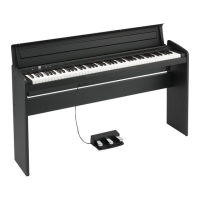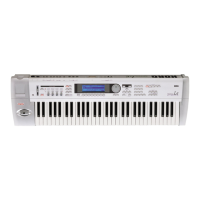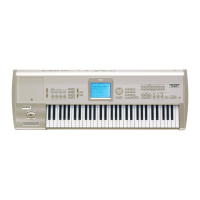COMBI P3: Timbre Param (Timbre Parameters) 3–5: Pitch T01–08, 3–6: Pitch T09–16
151
3–5: Pitch T01–08,
3–6: Pitch T09–16
Here you can make pitch-related settings for timbres 1–8
and 9–16.
3–5(6)a: Combination Name, Tempo
3–5(6)b:Timbre Info
For more information, please see “2–1: EQ Trim T01–08, 2–2:
EQ Trim T09–16” on page 147.
3–5(6)c: Pitch
Timbre 01 (Timbre Number):
Transpose [–60…+00…+60]
Adjusts the pitch of each timbre in semitone steps.
12 units equal one octave.
When Status (Combi 3–1(2)c) is INT, this parameter
will affect the pitches sounded by the M3. When Status
is EXT, this parameter will affect the note numbers of
the MIDI note messages that are transmitted.
For example if you make settings of +04 and +07
respectively for two timbres that are set to EXT, playing
the C key will transmit a C note number on the global
MIDI channel, and at the same time will also transmit E
and G note numbers on the MIDI channels of those
timbres.
Detune (Use BPM Adjust in Menu)
[–1200...+0000...+1200]
Adjusts the pitch of each timbre in one-cent units.
+0000: Normal pitch.
Note: You can also use the Detune BPM Adjust menu
command to alter a loop’s tempo via detuning. Since this
will alter the pitch of the loop along with the tempo, it’s
generally suited only to un-pitched percussive loops.
Transpose and Detune can be controlled via MIDI RPN
messages. The way that this works depends on whether
or not the Timbre uses an Drum Program.
If the Timbre does not use an Drum Program–for
example, if it uses a Single or Double Program–then
MIDI RPN Coarse Tune will control Transpose, and
RPN Fine Tune will control Detune.
If the Timbre uses an Drum Program, MIDI RPN
Coarse Tune and Fine Tune will be combined to control
Detune. The overall range is ±1 octave for coarse tune
and fine tune together.
Bend Range [PRG, –24...+00...+24]
Specifies the amount of pitch change that will occur when
the pitch bender is operated, in semitones.
PRG: The pitch range specified by the program will be used.
–24…+24: This setting will be used regardless of the setting
in the program.
The MIDI RPN Pitch Bend Change message can be
received to control this and change the setting.
(However it will not be received if this parameter is set
to PRG.) This message is received on the MIDI channel
for each timbre set by MIDI Channel (Combi 3–1(2)c).
For more information, please see KARMA “7–1–5b:
Transmit MIDI Filter” P.Bend (Pitch Bend).
Timbre 02...08, 09...16 (Timbre Number):
These are the pitch-related settings for timbres 2–8 and 9–16.
The settings are the same as for timbre 1. For more
information, please see “Timbre 01 (Timbre Number):,”
above.
▼3–5(6): Menu Command
• 0: Write Combination ☞p.185
• 1: Panel–SW Solo Mode On ☞p.106
• 2: Exclusive Solo ☞p.107
• 3: Copy from Program ☞p.185
• 4: Detune BPM Adjust ☞p.188
For more information, please see “Combination: Menu
Command” on page 185.
3–5a
3–5b
3–5c
3–5
Menu

